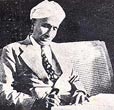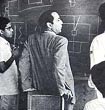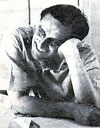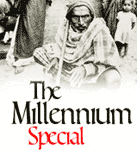The Magsaysay Award winner on India's greatest scientists.
We can categorise the scientists who have made significant contributions into three major groups. Those who have made outstanding original contributions to the advancement of scientific knowledge; those who have made outstanding contributions to advancing the frontiers of productivity through technological applications and those who have made contributions to institution building or research and scientific infrastructure. All these categories are exceedingly important from the point of view of scientific advancements.
 1. In the first category, everyone knows the contributions of Srinivasa Ramanujan who G H Hardy called the man who knew numbers. He is a perennial. Whatever he did at that time continues to stimulate generations of enquiry. Ramanujan's findings are now used in a number of important applications like laser technology. He was a brilliant mind and a great inspiring scientist. Unfortunately, he died very young.
1. In the first category, everyone knows the contributions of Srinivasa Ramanujan who G H Hardy called the man who knew numbers. He is a perennial. Whatever he did at that time continues to stimulate generations of enquiry. Ramanujan's findings are now used in a number of important applications like laser technology. He was a brilliant mind and a great inspiring scientist. Unfortunately, he died very young.
 2. The outstanding personality of this century from our country is Sir C V Raman. The Raman effect has led to a number of applications. He was truly a giant among scientists and with simple equipment and little facilities, he made a discovery of far reaching importance. How he continued his research till the end of his life was remarkable. In the latter part of his life, he was working on the physiology of vision and there also he made great contributions.
2. The outstanding personality of this century from our country is Sir C V Raman. The Raman effect has led to a number of applications. He was truly a giant among scientists and with simple equipment and little facilities, he made a discovery of far reaching importance. How he continued his research till the end of his life was remarkable. In the latter part of his life, he was working on the physiology of vision and there also he made great contributions.
Every year, as the founder president of the Indian Academy of Sciences, he would give a presidential address and he would make it a point that he said something new. He had high ethical values and high ethical principles in science. It was said that after he won the Nobel Prize, so many newspaper representatives were there in his house. His illiterate mother asked, what is all this fuss about? Why have all these men come? Then he explained to his mother what exactly he did to merit the Nobel Prize. Then his mother said, for this simple thing, they gave you a big prize? Apart from being a great scientist, he was a great communicator of science too.
 3. Sir Jagdish Chandra Bose made important contributions in the field of biology. When he found there was a movement of nutrients and liquid in the plant and the plant may have something like a human heart beat, many at that time could neither understand nor appreciate him. Today they are rediscovering the value of Sir J C Bose's findings.
3. Sir Jagdish Chandra Bose made important contributions in the field of biology. When he found there was a movement of nutrients and liquid in the plant and the plant may have something like a human heart beat, many at that time could neither understand nor appreciate him. Today they are rediscovering the value of Sir J C Bose's findings.
4. The fourth person is Professor P C Mahalanobis whose great work in the field of mathematics is well known. His contributions to planning in India are monumental.
 5. Another outstanding mathematician was S N Bose. The Bose-Einstein theory is well known. Many people feel his findings are even more important than that of Einstein.
5. Another outstanding mathematician was S N Bose. The Bose-Einstein theory is well known. Many people feel his findings are even more important than that of Einstein.
We had a whole series of mathematicians, physicists and also biological scientists who are very important.
 6. If I consider some great institution builders among great scientists, the names of Homi Bhabha and S S Bhatnagar come instantly to mind. Homi Bhabha was an outstanding cosmic ray physicist. He became the Fellow of the Royal Society, London, when he was very young, which is a very difficult election.
6. If I consider some great institution builders among great scientists, the names of Homi Bhabha and S S Bhatnagar come instantly to mind. Homi Bhabha was an outstanding cosmic ray physicist. He became the Fellow of the Royal Society, London, when he was very young, which is a very difficult election.
Towards the latter part of his life, he was more immersed in building the Department of Atomic Energy. The Tata Institute of Fundamental Research is also his brainchild because he felt unless you have outstanding institutions to train a large number of young people, our atomic energy establishment would not have brilliant scientists. Homi Bhabha's contributions, both as a cosmic ray physicist and as the builder of the atomic energy establishment, are monumental.
7. Under the same category comes Dr Shanti Swaroop Bhatnagar. He was a great chemist who spent the latter part of his life in building institutions. He was the father of our Council of Scientific and Industrial Research, and the whole series of national laboratories.
8. In the field of flowers and plants, Dr B P Paul developed so many new varieties of wheat and roses and bougainvillea.
9. A scientist who took science and technology to the field in a big way was Dr Naidu Amma. He was a leather technologist. When he became director of the Leather Research Institute, the first thing he did was to attend a course for cobblers. He identified himself with the cobblers. He said, I am working for the cobblers. Unless I understand their work, how can I understand them? He was a very humble person.
 10. One of the truly outstanding Indian scientists of the century is Vikram Sarabhai, who was also a great visionary. He came from an industrial family but he brought an economic sense in science. He was the people's scientist. He was also a great physicist.
10. One of the truly outstanding Indian scientists of the century is Vikram Sarabhai, who was also a great visionary. He came from an industrial family but he brought an economic sense in science. He was the people's scientist. He was also a great physicist.
Sir C V Raman once said had Vikram Sarabhai continued his research in physics, he would have received the Nobel Prize! He was not satisfied with doing research in the laboratory. He wanted to take science to the field.
When he succeeded Homi Bhabha as chairman of the atomic energy establishment, he not only developed atomic energy for peaceful applications, but helped establish the Nuclear Research Laboratory and the Indian Agricultural Research Institute. He felt nuclear science should go to agriculture and thereby to the farmers and farm movement.
He was also responsible for India's space programme, which we are justifiably proud now. But again, space application by just putting satellites in space was not very important for him. He wanted to make every Indian child a scientist. Not that the child becomes a scientist by profession, but that he should understand science. C V Raman also had the same desire.
Major scientific/technological achievements of independent India
 Vikram Sarabhai's space application of science and Homi Bhabha's nuclear programmes are outstanding pieces of work. In his speech on the fiftieth anniversary of our Independence, Rashtrapati K R Narayanan identified two areas that made the most significant progress in the last fifty years.
Vikram Sarabhai's space application of science and Homi Bhabha's nuclear programmes are outstanding pieces of work. In his speech on the fiftieth anniversary of our Independence, Rashtrapati K R Narayanan identified two areas that made the most significant progress in the last fifty years.
The first point he cited was agricultural self-reliance. Taking science to the farm and the field -- the lab to the land programme in agriculture -- was the most meaningful work, he said. Food self-sufficiency and national sovereignty cannot be separated because if you are not self sufficient, you do not have a sovereign nation.
That is why K R Narayanan picked up among all achievements,
the agricultural research as having made the most important contribution during this century to independent India. Remember Independence was born against the backdrop of the Bengal famine where several million people died.
So, in agriculture, space application, nuclear science and also defence science, we have done commendable work. Under the leadership of A P J Abdul Kalam, we have become self reliant in many areas of complex defence applications including surface to air missiles. Nobody will give defence technology to anyone. So, we almost built it up from scrap. The same way, nobody will part with space, research, atomic energy, secrets too.
In the field of medicine also, we have made significant progress. We have developed several vaccines, both for animal and human diseases, including the leprosy vaccine which reduces the time lag in treatments. In the area of nutrition research also, we are recognised as leaders in Asia.
Whether it is in agriculture, physics, mathematics, nutrition, medical research, nuclear or space applications, I think we have a large number of success stories. We should also remember that most of our findings are made under rather difficult circumstances, with very modest support and very low salaries. Now at least the salaries are better.
The post Independence period saw a large number of independent scientists who have been recognised for their excellence. But most of the latter day Nobel Prize winners like Hargobind Khurana, Subrahmanyan Chandrashekhar, etc other than C V Raman got it for work done abroad. They left India, settled abroad and did all their research there.
Many of our individual scientists are respected by the world. But as a nation, collectively, we are poor. We have produced individual brilliant scientists, but we do not have a dynamic scientific community. That is the difference between
Europe or North America and India. They have dynamic scientific communities. Therefore, if we want to make progress in the scientific world, we don't need an individual scientist who is a Nobel laureate, but average creative people.
Our young scientists have clearly shown their supremacy in the fields of information technology and biotechnology now, and everybody respects them. I think it was Bill Gates who said, 'If Indian information technology people are not given visas, Microsoft will have to move to Bangalore!.' Now, people respect our intellect.
But if you are able to raise the average performance, reduce the bureaucratic structures in management, you will see more creative people. I hope at least in the coming century, our aim will be on creating an enabling environment for creativity to flower in this country.
There is so much jealousy in universities and other places that if somebody
achieves something, the others try to pull him down. But I am quite optimistic about the new generation of scientists in our country. They have shown that they can master any technology and become number one. Provided we allow them to do so, of course.
As told to Shobha Warrier
Tell us what you think of this list
